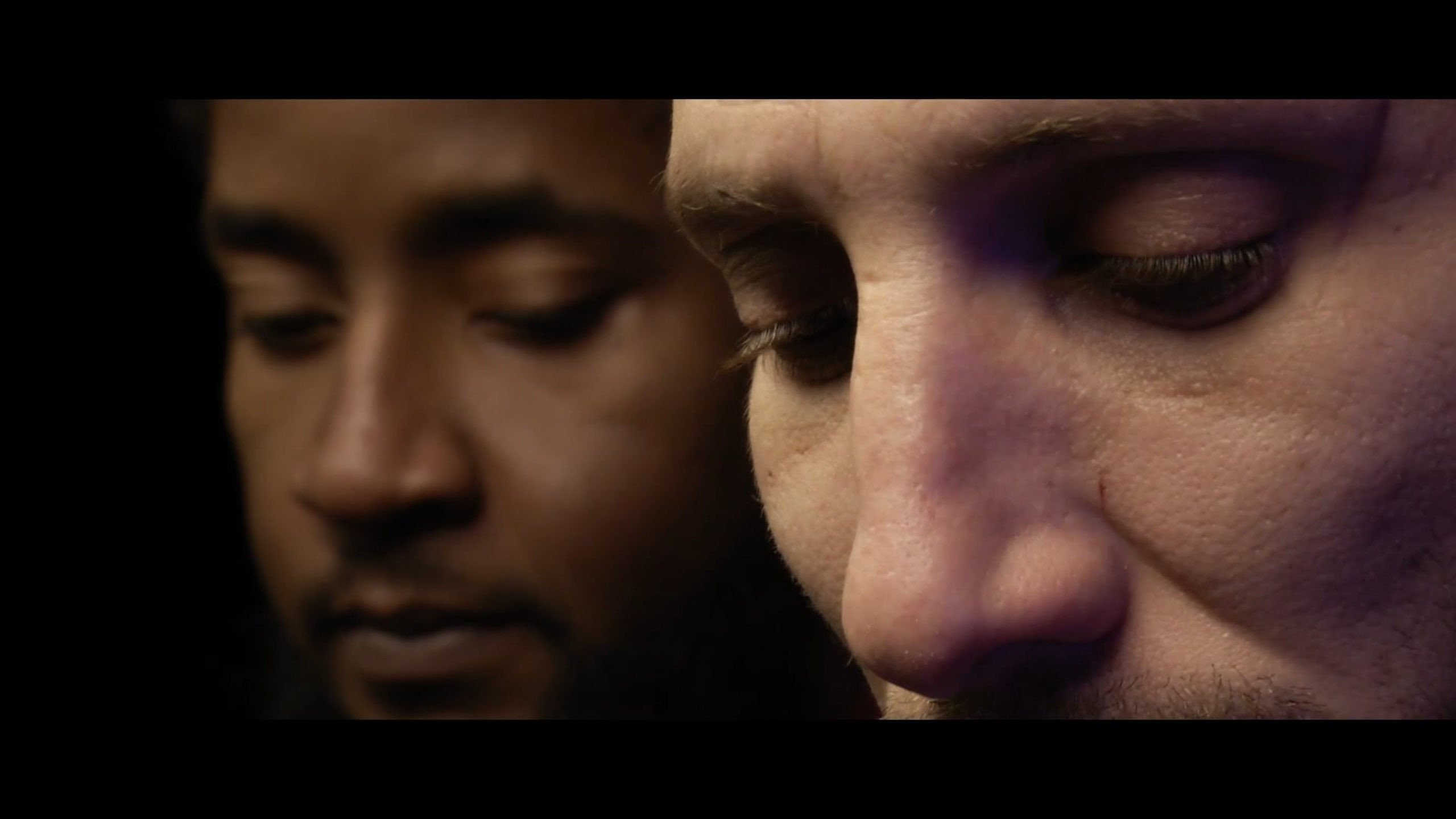Your film is shot in the Baumettes prison, with a group of inmates playing a collectively-written script. Could you retrace the genesis of the film?
I was invited by Lieux Fictifs and the Cnap to lead a cinema workshop with a group of 9 inmates in the Beaumettes prison during the winter of 2024. We only had 20 days to meet, find an idea, write, debate, experiment, rehearse and shoot a film together. It was a massive challenge considering the penitentiary context. On top of the time constraint, we also had to compromise with the institutional constraints as well as a particularly heavy political climate. Though I am familiar with this environment from having shot in psychiatric and penitentiary institutions in France and abroad, it felt difficult to make a film in so little time. I thought that the workshop could’ve settled with the goal of the collective experience of a film to be made, but without the obligation of a result, without pressure, without product, and so without a film. Why not do it with a wooden camera? I had in mind Deligny, using the camera tool with groups of young ex-convicts to lead them to learn about a new form of collective sensitivity. Most of the time, they would shoot without a roll, because working towards making a movie was the only real common goal. And yet, with the Baumettes guys, we made Notre père, with a lot of concentration, passion, intensity. And when I see today the emotion and the pride on their faces after the screening, I feel it is the duty of the film to return the energy and the spirit which led to its completion. So it really was worth it to follow through with it.
The actors sometimes allude to the acting work. How did you go about this work on acting with them?
I arrived at the Baumettes as I was witnessing the Mazan rapes trial. So I suggested to the guys—because we were going to be a group of guys, approximately from the same area, working together in a black box for close to a month—to think about the construction of our masculinities. The context of the trial, which I was immersed in, felt like the absolute theatrical space. A grotesque mass of positions and excesses of all the games of social connections. The initial project was to make a film about a powerful man, a generic figure of the patriarchy, by taking turns acting out every role in the courthouse: the judge, the assistant public prosecutor, the plaintiff, the defence, the audience, the press… And the idea literally became a confrontation between a father and his sons at the time of handing over his heritage. A typical tragedy configuration. Actually, it is a little bit like the tale of the king with three sons. Stéphane, who played the father, wanted to draw inspiration from Marlon Brando’s acting in The Godfather, so we really played on the setting imposed on us by this huis-clos by working on the lighting of the faces like in Coppola’s film. The styling of the image became an integral part of the space of fiction and play opened by the filmic device. It is always about this game, which allows us, or forces us, to shift from ourselves and occupy roles other from the ones we are usually assigned.
Your film is part of the films documenting their own production. What determined the choice of play between colour and black and white?
Since life in prison is full of contingencies and we didn’t have a lot of time to work with finesse of writing and fiction play, we established the idea of putting in place a confusing three-level plan to by blending the fictional framework, the preparations where each actor plays to give body and nature to his character, and individual interviews where everyone, at a distance from his character and the group, engages in the intimacy of confession to personal reflections and to a collective realisation. Formally, it was about distinguishing, through a game of alternating between colour and black & white, the spaces and temporalities peculiar to each of these three frameworks which, so closely weaved, cannot be split between fiction and documentary any longer.
Interview by Nathan Letoré
